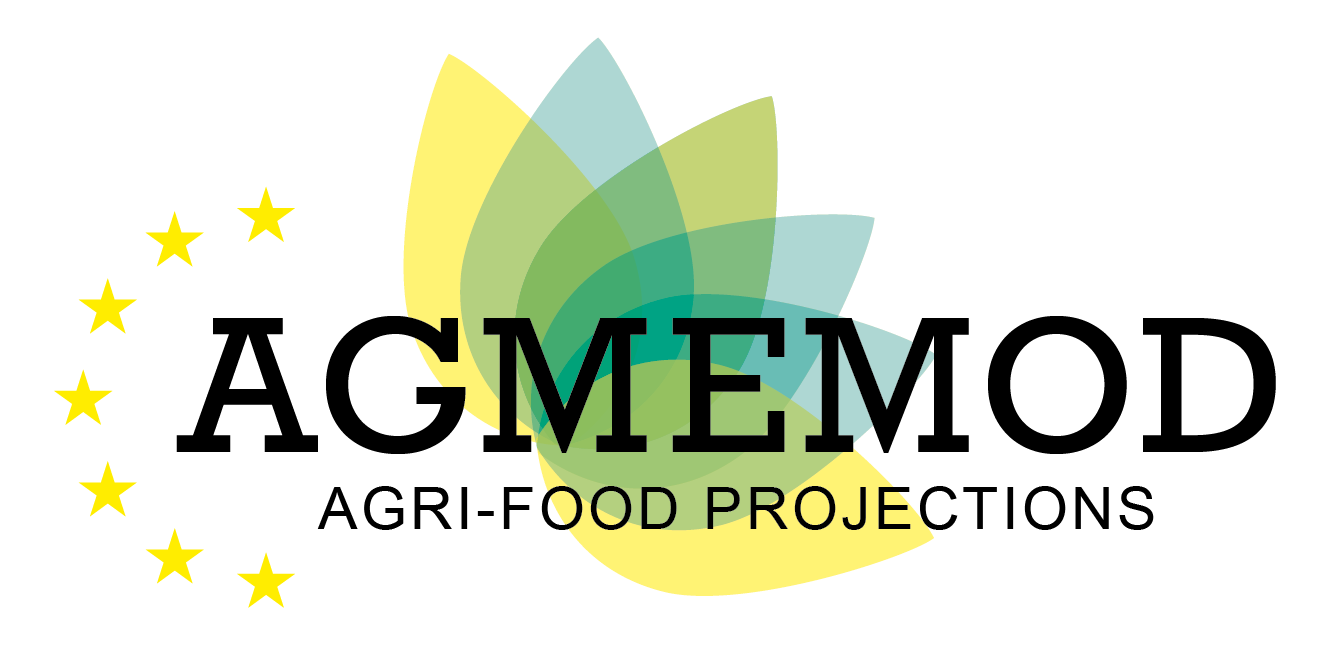
FAQ
- What is AGMEMOD?
- Which countries have been already included in the model?
- What kind of results does AGMEMOD produce?
- What software does AGMEMOD use?
- What is the general structure of AGMEMOD?
- What is meant by the term flexibility with respect to AGMEMOD?
- How can I learn more about AGMEMOD?
- I am an agricultural economist and I would like to use the model for my country, what should I do?
- I work for the government of my country and I want to know the effect of policies in place or of alternative agricultural policies in my country, can I use AGMEMOD to answers such questions?
- Why is a country team required for an effective work with AGMEMOD?
- Where can I find the most recent results of the European Commission EU Outlook?
1. What is AGMEMOD?
AGMEMOD is a dynamic, multi-product, partial equilibrium model of the agricultural sector for the countries included in the model. AGMEMOD is used for agricultural economic studies as well as for providing policy analysis advice for agricultural ministries in diverse countries.
2. Which countries have been already included in the model?
AGMEMOD has country models included for: EU, its Member States, Bosnia and Herzegovina, Brazil, Belarus, China, Ethiopia, Ghana, Iceland, Kenya, Kazakhstan, North Macedonia, Montenegro, Norway, Rwanda, Russia, Serbia, Tanzania, Ukraine, Uganda and the United Kingdom.
Please be aware that not all country models are regularly updated. The country teams are responsible for updating and including new data/products in their country model.
3. What kind of results does AGMEMOD produce?
AGMEMOD generates projections and simulations, year by year, to a 10-year horizon, for the main agricultural activities and commodities, supply balance variables and market prices.
4. What software does AGMEMOD use?
AGMEMOD is operated through its own GUI (Graphical user interface). AGMEMOD is solved by GAMS. However, input files such as data input and equation specification are set up in Excel. Additionally, it is possible to estimate equations with R.
5. What is the general structure of AGMEMOD?
AGMEMOD has its own databases and equations per country according to a general template, set up and specification between the different variables. The model is run jointly by running all countries (or a selection of them).
6. What is meant by the term flexibility with respect to AGMEMOD?
Each country teams decides which products and markets are important for their country and based on that choice the products and model composition from two different countries can differ considerably. For example, in Italy the production of tomatoes is modelled, but this economic activity is not included in the Swedish AGMEMOD model.
However, the AGMEMOD system solves all EU countries, accession and other countries simultaneously.
7. How can I learn more about AGMEMOD?
The AGMEMOD network provides training courses each year. They last approximately one week. This is a good start to get to know AGMEMOD. If you are interested in a training course please contact the AGMEMOD network.
8. I am an agricultural economist and I would like to use the model for my country, what should I do?
Please contact the AGMEMOD network to ask for more details.
If your country has been already included in the AGMEMOD network, we will put you in touch with the AGMEMOD team in your country.
If your country has not been included in the AGMEMOD network, we will provide assistance on the required steps to become part of the AGMEMOD network.
9. I work for the government of my country and I want to know the effect of policies in place or of alternative agricultural policies in my country, can I use AGMEMOD to answers such questions?
AGMEMOD is a modelling tool that is designed for the evaluation of the ex post effects of current policies for the coming 10 years (Baseline) and also for the evaluation of the effects of alternative policies that are still not in place but which could be introduced (Scenario analysis).
10. Why is a country team required for effective work with AGMEMOD?
The AGMEMOD model is complex. Its use requires in-depth expertise in different areas of the agricultural sector to provide accurate and economically meaningful results and analytic insight. Ideally, a country team is comprised by a) an agricultural economist, who is responsible of updating the econometric equations of the model; b) a statistician who is responsible for updating the database of the model, and c) a person working in the agricultural ministry who is responsible for providing the information on the budgets allocated for the support of the agricultural sector.
In some countries the AGMEMOD team comprises only two of the three required members, in some other countries there are more than only the three collaborators identified here.
11. Where can I find the most recent results of the European Commission EU Outlook?
The results are published by the European Commission in two aggregates (EU15 and EU13) under this Link.
The AGMEMOD Baseline results at member state level can be found here.
